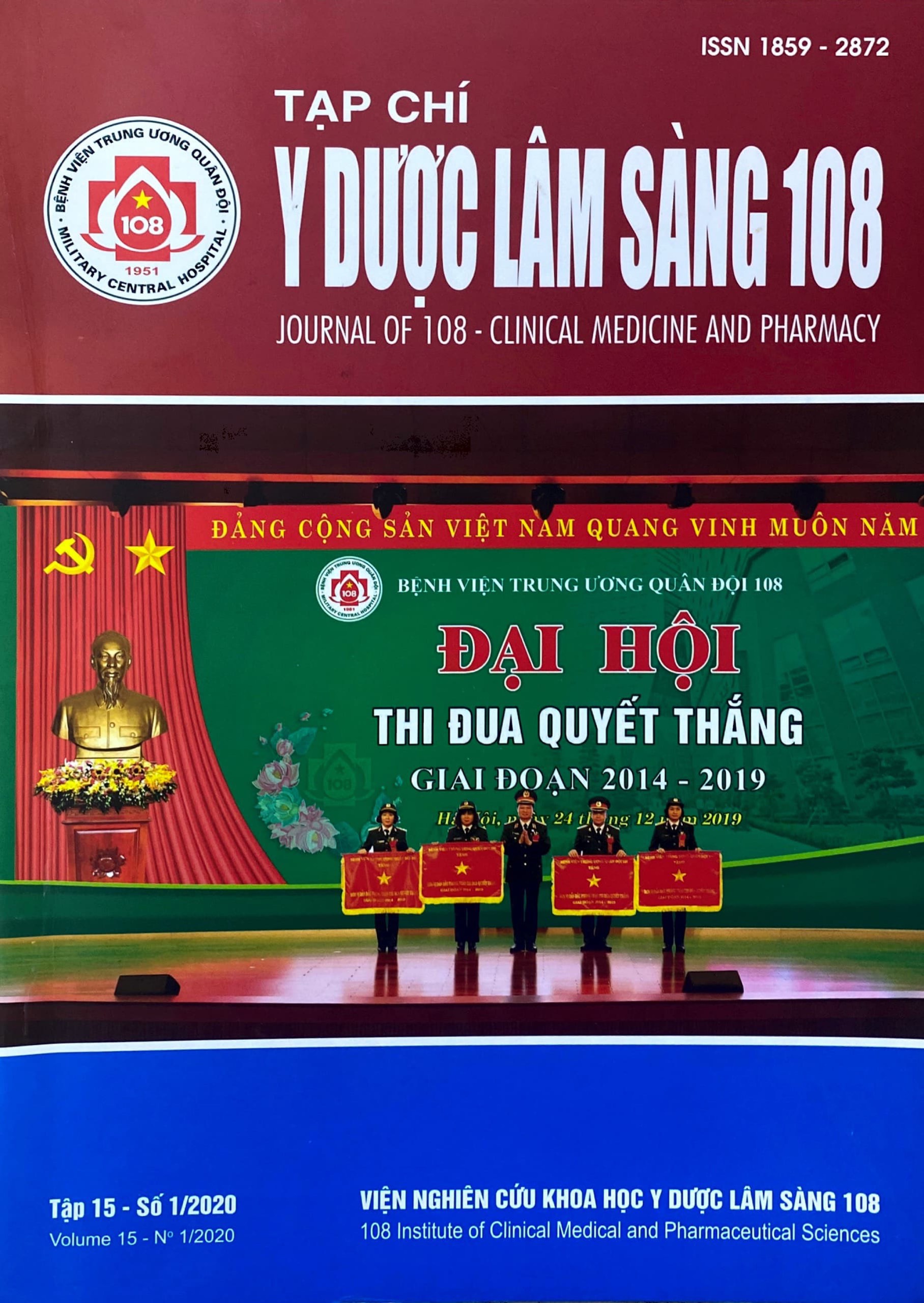Clinical and laboratory differences between scrub typhus and other Rickettsiosis in hospitalized patients in 103 Military Hospital and 108 Military Central Hospital
Main Article Content
Keywords
Abstract
Objective: To investigate clinical and laboratory differences between scrub typhus and other Rickettsiosis in hospitalized patients in 103 Military Hospital and 108 Military Central Hospital. Subject and method: This was a descriptive, comparative study on 50 cases of scrub typhus confirmed by dot-ELISA or PCR and Rickettsiosis confirmed by PCR, hospitalized in 103 Military Hospital and 108 Military Central Hospital. Result: Scrub typhus cases were mainly distributed in rural area (64%) while rickettsiosis cases were more prevalence in urban area (68.4%). Skin and mucosal manifestations were more common in scrub typhus with eschar rates (70%), skin congestion (60%), and lymphadenopathy (44%), on the contrary Rickettsia patients had a higher incidence of maculopapular rash (39.5%). Respiratory symptoms were statistically more common in scrub typhus with a crackles rate of 36% and higher frequency of breathing (20.27 ± 2.63) with p<0.05. The complication rate was higher in scrub typhus patients with respiratory distress symptoms, septic shock, encephalitis, acute kidney injuries (AKI) rates were 12%, 8%, 8%, 8%, respectively. Inflammatory maker: PCT increase > 0.05ng/ml was recorded in 100% of 2-group patients, in which the increase in PCT of the Rickettsia group ( ± SD: 0.926 ± 0.45) was significantly lower compared with Scrub ( ± SD: 2.396 ± 2.819) with p=0.026. Scrub typhus group had a 48% increase in leukocytosis, significantly higher than other Rickettsia groups (13.5%) with p<0.01. Lung lesions on X-rays were more common in Scrub typhus, but there were only statistical difference (p<0.05) in pleural effusion and serous fluid with corresponding proportions in scrub typhus were 30.8% and 33.3% respectively. Conclusion: Rickettsioses was mainly distributed in urban areas (68.4%), while scrub tuphus was more common in urban areas (64%). Eschar was the indicator of scrub typhus and only presented in 2.6% Rickettsioses patients. Respiratory symptoms were more common in the scrub typhus group with a 42% cough, 36% rale, those were associated with a higher rate of lung lesions on X-rays (infiltrates, pleural effusion) and related to higher complication rates. The PCT level of the Rickettsia group was significantly lower than the scrub typhus group.
Article Details
References
2. Nguyễn Thị Thu Hằng và cộng sự (2017) Thiết lập quy trình real-time PCR phát hiện Orientia tsutsugamushi và Rickettsia gây bệnh ở người. Truyền nhiễm Việt Nam, số đặc biệt hội nghị khoa học, tr. 79-86.
3. Aung AK, Spelman DW, Murray RJ et al (2014) Rickettsial infections in Southeast Asia: Implications for local populace and febrile returned travelers. The American journal of tropical medicine and hygiene 91(3): 451-460.
4. Shpynov S, Pozdnichenko N, Gumenuk A (2015) Approach for classification and taxonomy within family Rickettsiaceae based on the formal order analysis. Microbes and infection 17(11-12): 839-844.
5. Vu Trung N, Thuong NTH, Toan TK et al (2017) Seroprevalence of scrub typhus, typhus, and spotted fever among rural and urban populations of northern Vietnam. The American journal of tropical medicine and hygiene 96(5): 1084-1087.
6. Biggs HM, Barton Behravesh C, Bradley KK et al (2016) Diagnosis and management of tickborne rickettsial diseases: Rocky Mountain spotted fever and other spotted fever group rickettsioses, ehrlichioses, and anaplasmosis-United states: A practical guide for health care and public health professionals. MMWR Recomm Rep. 65(2): 1-44.
7. Hamaguchi S, Cuong NC, Tra DT et al (2015) Clinical and epidemiological characteristics of scrub typhus and murine typhus among hospitalized patients with acute undifferentiated fever in northern Vietnam. The American journal of tropical medicine and hygiene 92(5): 972-978.
8. Trung NV, Le Thi Hoi, Huong DT et al (2019) Clinical manifestations and molecular diagnosis of scrub typhus and murine typhus, Vietnam, 2015-2017. Emerging infectious diseases 25(4): 633.
9. Civen R, Ngo V (2008) Murine typhus: An unrecognized suburban vectorborne disease. Clinical Infectious Diseases 46(6): 913-918.
10. Thanachartwet V, Desakorn V, Sahassananda D et al (2016) Serum procalcitonin and peripheral venous lactate for predicting dengue shock and/or organ failure: A prospective observational study. PLoS neglected tropical diseases 10(8): 0004961.
 ISSN: 1859 - 2872
ISSN: 1859 - 2872
